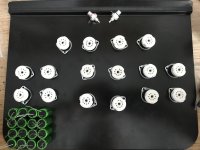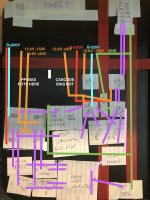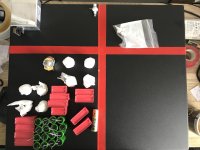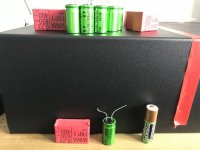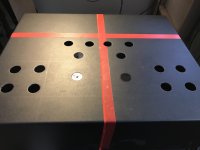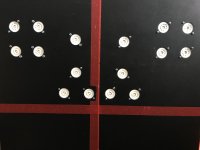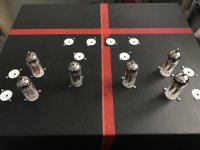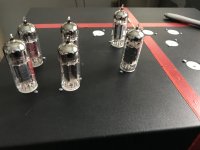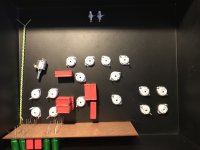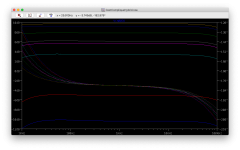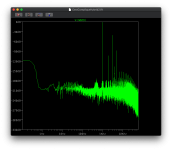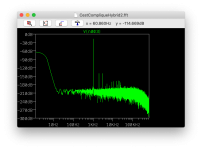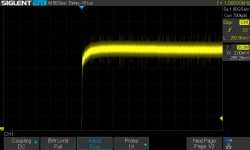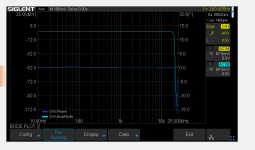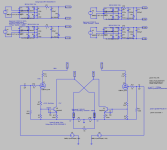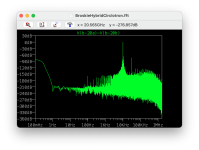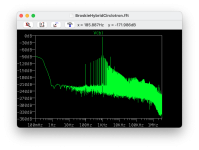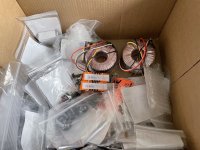The final tuning seems good - I found a bug with a copied label on the ltspice model which acts like a link between the channels.
Remodelled as a unity buffer (0dB gain) works nicely, then altered the resistor values on the front end to increase gain. A 3.16V input gives 16Vpp at ±240mA into 32ohms - about 2W which is enough to fry headphones. So this is good, it can be tuned to operate correctly with any low impedance headphone. This means it's giving a good 8dB gain which is enough for headphones. The bode plot shows a frequency response that's very good and even better with balanced
input.
The tube sockets are 22mm so this means I can get a 22mm sheet metal hole punch that makes the hole process (pun intended) an easier mechanism. Once I have the components all pulled together - I will make a layout, I've learnt that you can't make a layout until you have the components.
I'll take some photos of working out the layout once the pieces arrive.
Remodelled as a unity buffer (0dB gain) works nicely, then altered the resistor values on the front end to increase gain. A 3.16V input gives 16Vpp at ±240mA into 32ohms - about 2W which is enough to fry headphones. So this is good, it can be tuned to operate correctly with any low impedance headphone. This means it's giving a good 8dB gain which is enough for headphones. The bode plot shows a frequency response that's very good and even better with balanced
input.
The tube sockets are 22mm so this means I can get a 22mm sheet metal hole punch that makes the hole process (pun intended) an easier mechanism. Once I have the components all pulled together - I will make a layout, I've learnt that you can't make a layout until you have the components.
I'll take some photos of working out the layout once the pieces arrive.


